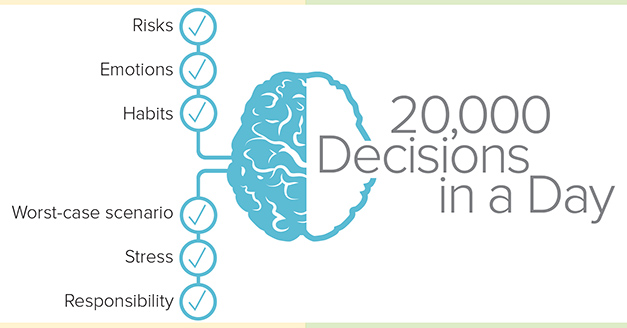
We make 20,000 decisions in a day. What is the process in making decisions? As it turns out, human beings are not always rational when making choices. Bias, lived experience, emotion, and imaginings all play a role in the process.
Economists and social scientists have expressed curiosity over human behavior and have tried to explain why people do what they do and what causes poor decisions.
Some findings include:
- People seek safety and avoid risks.
- People react to emotion (fear), whether real or imagined to avoid risks.
- People learn habits and continue to make the same decision even if the circumstance has changed and it no longer suits them.
- People get paralyzed with too many choices (7 or fewer options is ideal).
- People imagine a “worst-case scenario,” which then causes a paralyzing effect.
- High stress levels inhibit rational, higher-level thinking.
- People seek the “perfect decision,” which does not exist, but results in inaction.
- Making a decision causes a person to be responsible for their choice, which may be scary. It does not work out, there is no one to blame